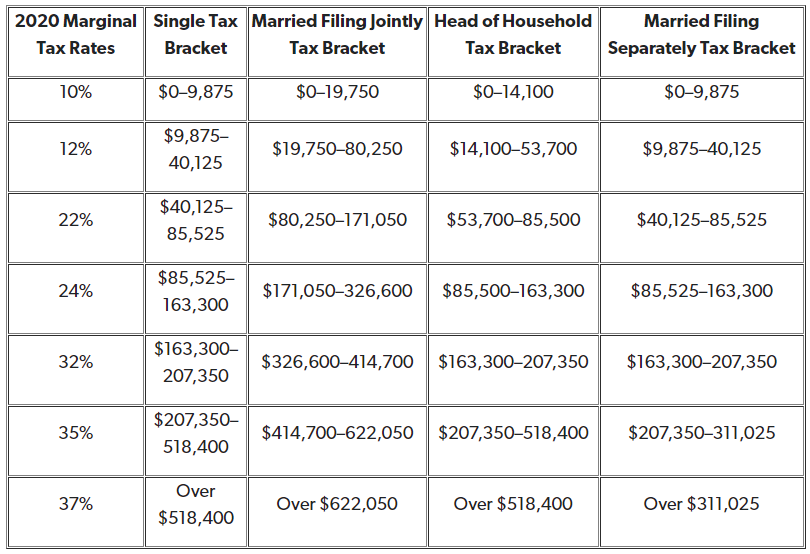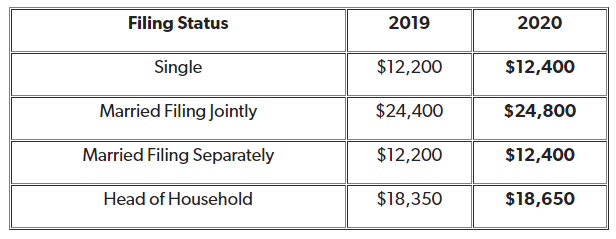Opening Day for the IRS is Today February 12, 2021.
The Internal Revenue Service has set the opening day for the 2021 tax filing season for Friday, Feb. 12, 2021. That’s the day the IRS will begin accepting and processing 2020 tax year returns.
The tax filing deadline this year is Thursday, April 15, 2021

What do tax filers need to know this season?
1. Get an appointment if you want to talk to someone at IRS offices.
Don’t expect to drop into an IRS office to get any help this tax season. All offices are appointment-only now.
If you need to visit an IRS Taxpayer Assistance Center in person, you must schedule a time by calling 844-545-5630 for the appointment hotline.
Taxpayers are asked to check IRS.gov for the days and hours of service, as well as the services offered at the location they plan to visit.
2. Tax Deductions and Credits to Consider for Tax Season 2021
Here are some deductions and credits you might be able to claim on your 2020 tax return:
Recovery Rebate Credit – Taxpayers may be able to claim the recovery rebate credit if they met the eligibility requirements in 2020 and one of the following applies to them:
- They didn’t receive an Economic Impact Payment in 2020.
- They are single and their payment was less than $1,200.
- They are married, filed jointly for 2018 or 2019 and their payment was less than $2,400.
- They didn’t receive $500 for each qualifying child.
Refund interest payment – People who received a federal tax refund in 2020 may have been paid interest. The IRS sent interest payments to individual taxpayers who timely filed their 2019 federal income tax returns and received refunds. Most interest payments were received separately from tax refunds. Interest payments are taxable and must be reported on 2020 federal income tax returns. In January 2021, the IRS will send a Form 1099-INT, Interest Income, to anyone who received interest of at least $10.
- Charitable Deductions – If you like to give like no one else, we have some great news! In an effort to encourage more charitable giving, the CARES Act allows you to deduct up to 100% of their adjusted gross income (AGI), which is your total income minus other deductions you have already taken, in qualified charitable donations if you plan to itemize their deductions. What if you’re taking the standard deduction? Well, the CARES Act added a new “above-the-line” deduction that will help you write off up to $300 of charitable contributions you made in cash.
- Medical Deductions – If you spent a lot of time in the hospital or found yourself with some hefty medical bills last year, you might be able to find at least some tax relief. You can deduct any medical expenses above 7.5% of your adjusted gross income (AGI), which is your total income minus other deductions you have already taken. For example, if your AGI was $100,000, you can deduct out-of-pocket medical expenses above $7,500 in 2020. But you have to itemize your deductions in order to write off those expenses on your tax return.
- Business Deductions – If you’re self-employed, there are a bunch of deductions you can claim on your tax return—including travel expenses and the home office deduction if you use a part of your home to conduct business. But if you’re one of the millions of workers who were sent home to work remotely, you won’t be able to claim the home office deduction since it’s reserved for self-employed individuals only. Sorry!
- Earned Income Tax Credit – The EITC is a refundable credit designed to help out low- and middle-income workers (workers earning up to $56,844 during the 2020 tax year might be eligible). Depending on your income, your filing status, and how many children you have, the credit could save you anywhere from a few hundred to a few thousand dollars on your taxes. But here’s a crazy stat: About one out of five taxpayers who are eligible either don’t claim the benefit on their taxes or don’t file a tax return at all. Don’t let that be you!
- Child Tax Credit – Got kids? Families can claim up to $2,000 per qualified child with this tax credit (the income limits for this credit are $200,000 for single parents and $400,000 for married couples). And since this is a refundable credit, your family can receive up to $1,400 per child as a refund. And there are plenty of other deductions and credits that might be up for grabs depending on your situation! If you don’t want to miss out on any tax savings, you’ll want to work with a tax advisor who can make sure you’re not leaving any deductions or credits on the table.
3. Some struggling families will face delays for their tax refunds.
The IRS notes that more than nine out of 10 refunds will be issued within less than 21 days, which is good news.
But tax filers who benefit from the Earned Income Tax Credit and the Additional Child Tax Credit should not expect their refunds until possibly the week of March, even if they file as soon as February 12th.
The reason? Congress is cracking down on tax-return-related fraud. The Protecting Americans from Tax Hikes Act mandated the IRS delay issuing tax refunds for returns claiming the EITC or the Additional Child Tax Credit until Feb. 15. The move is designed to give the IRS more time to detect fraud and prevent refunds from being issued to ID thieves who file fake tax returns using such credits.
But consumers who depend on the refund cash will face extra delays, given holidays and weekends.
Another thing to note: The IRS online “Where’s My Refund” tool will not show an estimated date for many tax returns involving the EITC/ACTC credits until after Feb. 15, 2021.
“So don’t panic in late January and mid-February if you don’t see a refund date on ‘Where’s My Refund.’ That’s just how the tool will operate given the special circumstances with the EITC and ACTC refunds”.
“Where’s My Refund” at www.irs.gov and the IRS2Go phone app will be updated after Feb. 20, 2021, with projected deposit dates for the early filers who receive the earned income credit and additional child credit.
4. Look out for high-cost, quick-cash on tax refund advances.
The ads are already on the radio and TV. Tax filers might be tempted to take out refund anticipation loans that proclaim no fee will be charged. The reality is borrowers could face other higher fees for tax preparation or another product. Advanced loans are being marketed heavily this year with HR Block and Jackson Hewitt in light of the delays ahead for tax refunds for those who filed for the earned income tax credit and the additional child tax credit. Usually, if someone is promising you a cash advance, you are going to pay somewhere. Be very cautious and if you can wait for the money. Don’t fall, victim, because you are going to end up paying somewhere.
5. Take a close look at that W-2 Form.
Some tax filers are going to discover that they have to deal with a “Form W-2 Verification Code.”
About 70 million W-2 forms will include a 16-digit verification code that tax filers or preparers will need to add when prompted by tax software. About 60 million W-2s had such code during the 2020 filing season.
The IRS anticipates that the verification code ultimately will be used on all W-2 forms in future years.
6. Remember, scam artists, love tax season.
Be vigilant that con artists, pretending to be the IRS, might reach out to you via email or even knock on your front door. The crooks are going after tax preparers as well. In January, the IRS warned that cybercriminals were pretending to be tax filers that wanted help filing their returns. Be very careful about everything, especially electronics, and any solicitations. Don’t call numbers in the emails, but call the numbers of your tax preparers or the IRS directly. Get the proper numbers from their websites. Just assume that it might be real, but just in case, call the tax preparer directly or go to IRS.gov and find the correct number to make the phone call.
7. Brackets
Income Brackets and Rates for 2021 Tax Season
There are seven federal tax brackets: 10%, 12%, 22%, 24%, 32%, 35% and 37%. The bracket depends on taxable income and filing status.
2020 Income Tax Rates and Brackets

Standard Deduction

8. Watch Your Refund
Are you expecting a tax refund this year? The majority of filers should, according to past IRS statistics. Out of the nearly 150 million returns processed last year, almost 101 million resulted in refunds. Total refunds for the tax year 2019 were just over $282 billion, with an average refund of $3,086.
That’s great news in many respects — until you realize that you have effectively loaned your refund amount to the government interest-free. As much fun as it can be to get a refund, it’s more efficient and economical to balance out your withholdings as precisely as possible so you owe nothing or very little in taxes. Why not make the interest on the extra withholding yourself?
Assuming you do get a refund, you can track its progress using the IRS tool “Where’s My Refund?” With your Social Security Number or Individual Tax Identification Number (ITIN), filing status, and exact refund amount expected, you can check your refund status within 24 hours after an e-return has been received or 4 weeks after mailing a traditional paper return. You may also check your refund status on a mobile device using the IRS2Go app. Just don’t forget to claim it, as many of your fellow taxpayers never put in for the refunds they have earned.
9. How much money does the government receive in taxes?
How much money does the government receive in taxes? Government revenues rose from just under $3.25 trillion in the 2015 fiscal year to $3.267 trillion in the 2016 fiscal year. Individual income taxes comprised just under $1.55 trillion of that total.
Unfortunately, with corresponding outlays of $3.854 trillion, we are left with a $587 billion deficit for fiscal 2016. Cutting this deficit seems unlikely in 2017 for several reasons. First, it hasn’t been done since 2001, regardless of which party has controlled the White House or Congress. Next, the incoming President has promised to cut taxes massively while rebuilding the nation’s infrastructure. Finally, he has indicated an unwillingness to trim Social Security benefits. Put it all together and we have a recipe for continuing — and quite possibly expanding — deficit spending.

10. Procrastinators Rejoice!
Are you a tax procrastinator who cares more about the end of tax season than the beginning? The filing deadline in 2021 is Thursday, April 15. The IRS suggests filing your taxes as early as possible once you have all the required documents. Once a criminal gets access to your Social Security number, he or she has everything necessary to file a tax return in your name. The purpose of a fraudulent tax return is, obviously, not to pay your back taxes, but to pocket your tax refund. This scam occurs early in the tax season, well before most taxpayers file. Take every possible precaution to keep your SSN secret.
In the previous filing season, the IRS processed almost 140.9 million returns. According to the IRS Commissioner, the agency expects to process over 150 million tax returns in the upcoming tax year as well. If you’re expecting a refund, it doesn’t pay to procrastinate and risk being caught in the middle of millions of last-minute returns. However, if you have to pay taxes, there’s no harm in waiting to file closer to the deadline — just don’t wait until the very last minute in case either you or the IRS run into last-minute technical problems. Taxpayers can usually get an extension on their return, but they must still pay taxes owed by the deadline or incur interest and penalties.
Sure, you can wait until mid-April and then frantically take your shoebox full of crumpled receipts into your local tax preparer, begging for help — but why would you wait? Pre-season planning can help you and your tax preparer thoroughly investigate all the deductions and credits available to you to help you get the most out of your refund. In fact, there are things you could do today to save on this year’s taxes. File nearer the deadline if you want, but have your taxes prepared early in any case.
Find some time amid the hectic holiday to take a few simple steps and make your life easier as tax filing season kicks in. Even better, get in the habit of organizing your tax materials throughout the year in order to make the next season go as smoothly as possible. Nobody enjoys going through the dreaded crumpled receipt shoebox, whether the filing deadline is a few months or a few hours away.

